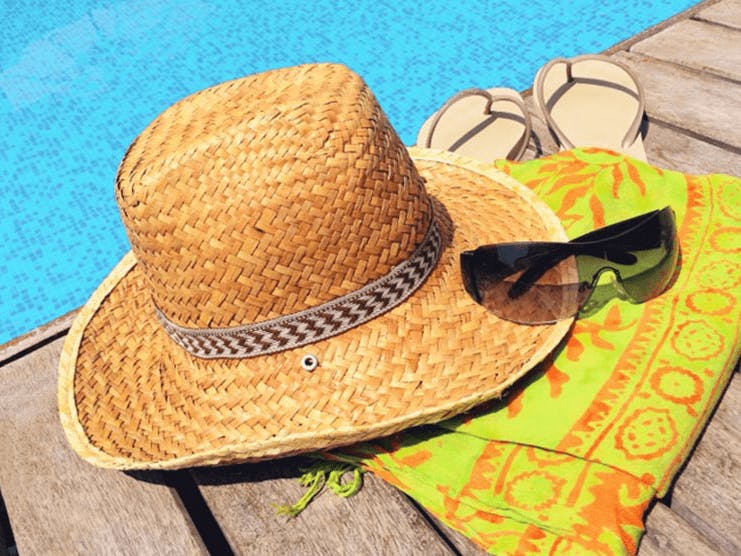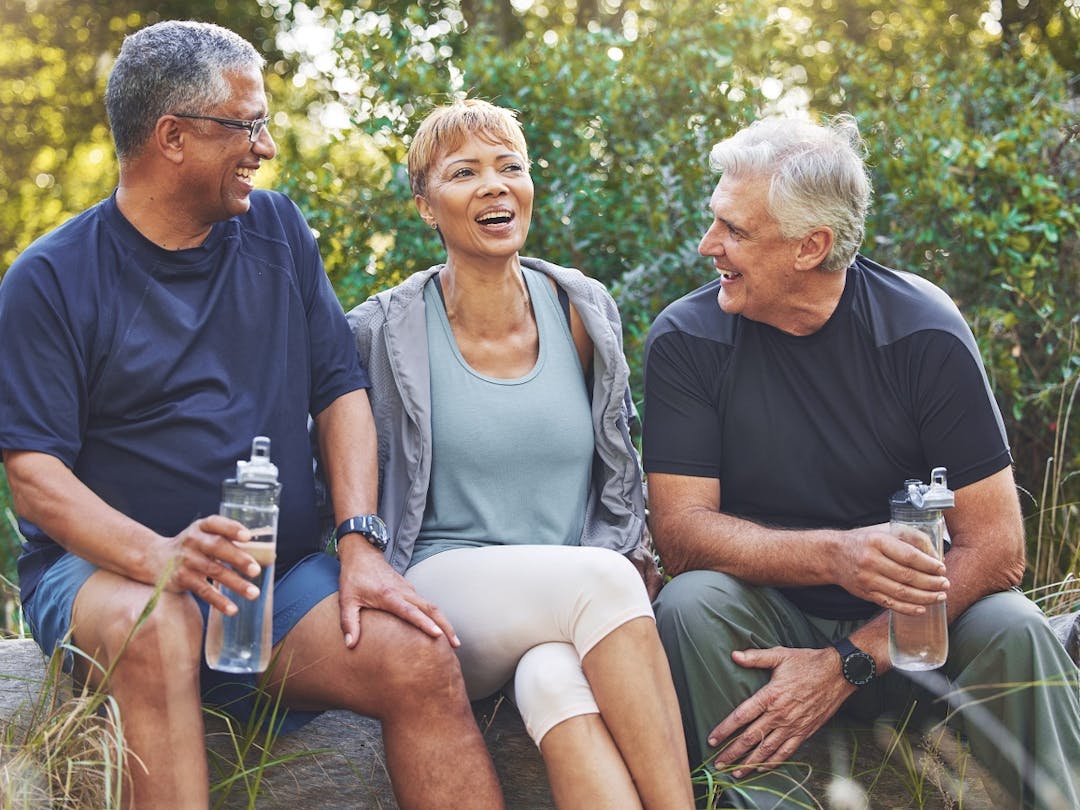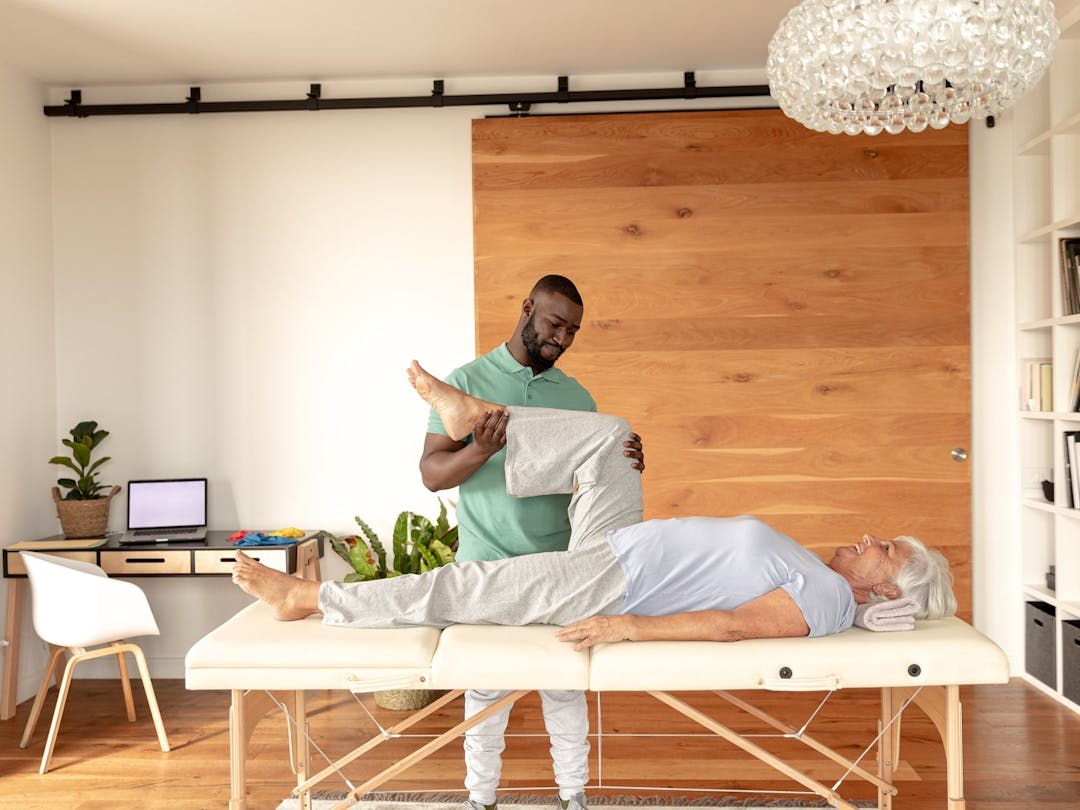
Sunlight, sand, and pollen can assault your eyeballs and take the fun out of summer’s warmest days. We asked an eye doctor what he packs in his vision first-aid kit.
The eyes may or may not be windows to the soul, but they’re most definitely gateways to the brain.
Your eyes connect directly to the big organ in your skull via the optic nerves. In fact, many scientists consider the eyeballs to be actual exposed brain. So you’d be smart to protect them—especially with summer upon us. The more time you spend outdoors, the higher your risk of damage from UV light, sand, and injury from games like pool volleyball.
But that doesn’t mean you have to tamp down the fun. Instead, you should simply plan ahead. For advice on eye protection, we spoke with Laine S. Higa, OD. He’s an assistant professor at Salus University’s Pennsylvania College of Optometry. Here’s what he never leaves home without.
1. Eye wash
A grain of sand or dirt in your eye can ruin an afternoon at a beach or campsite. The solution is simple: A travel-sized bottle of sterile eye wash. This saline-based fluid allows you to quickly flood the surface of your eye and rinse away debris that could otherwise scratch your cornea, which is the outer layer of the eye.
“If you are camping or traveling abroad, you definitely want eye wash to be a part of your kit,” says Higa. “Remember that in other countries, the options you are used to may not be available.”
To be clear, eye wash is different than lubricating drops. Eye wash comes in a bigger bottle—4 ounces is common—and it’s meant to clean the eye, not treat dryness. Higa notes that eye wash doesn’t replace whatever drops you usually carry for allergies or glaucoma either. Make sure you have those, too.
2. Swim and sport goggles
According to data collected by Prevent Blindness, a vision advocacy group, pool and water sports account for twice as many injuries per year as racquet sports, fishing, and bicycling combined. And just because you’re not on the water polo team doesn’t mean you’re not susceptible. Marco Polo, pool volleyball, and swimming laps in shared lanes can all be risky. Even water itself can be dangerous, says Higa. It can introduce chemicals and pathogens that increase the risk of an infection.
While it’s true that children receive the majority of eye injuries, anybody engaging in water play should have eye protection. And goggles can serve a practical purpose, too: They can help you see clearly in the absence of contact lenses.
Wait, why aren’t you wearing contacts? Because combined with questionable water, they increase your risk of an eye infection. Bacteria and pool chemicals can cling to lenses and cause trouble, says Higa. So, in place of contacts, strap on a pair of goggles with magnifying lenses, which function like reading glasses. You can find them at sporting goods stores and swim specialty shops. Alternately, you can talk to your eye doctor about ordering prescription goggles.
Eye protection won’t keep 100% of water out, says Higa. So you still need to remove your contacts. But the goggles will stave off an eye injury. Higa also notes that you should always wear goggles during yardwork or home projects involving power tools. If you don’t already, you should protect your eyes anytime you’re mowing, trimming trees, or cutting two-by-fours.
3. UV 400 sunglasses
You might already wear sunglasses for eye comfort. But you should know that they’re a safety aid, too. Sun exposure boosts your risk of cataracts and macular degeneration, two of the leading causes of vision impairment in the United States, according to the National Eye Institute. It also plays a role in certain cancers in and around your eyes.
For ideal protection, choose sunglasses that block 100% of the sun’s ultraviolet (UV) rays and are big enough to shade the delicate skin around your eyes, says Higa. They don’t have to be expensive to work properly. Just look for lenses labeled “UV 400” or “100% UV protection.” And if you have sensitive eyes, consider polarized lenses. They cost a little more, but they reduce your risk of falling by decreasing the glare reflecting off surfaces like water and wet pool decks.
Once you’ve picked out the right shades, Higa recommends that you wear them even on cloudy days and in your car. While your vehicle’s front windshield blocks more than 90% of the sun’s UV rays, the side windows filter out only about 71%.
4. SPF eye cream or sunscreen stick
We’ve established that your eyes are sensitive organs, but so is the skin around them. The soft tissue that forms your eyelids and the surrounding area accounts for one in five basal cell carcinomas of the head and neck. This is the single most common area for skin cancer, and direct sunlight raises your risk.
Sunscreen sounds like an obvious solution, but here’s the problem: Among those who regularly apply protection, one in seven skip the area around their eyes, according to a recent study from the University of Liverpool. And the problem is worse when people use products sold as SPF moisturizers. Unlike sunscreen, moisturizers are designed to absorb into the skin, rather than form a barrier on top. When using these products, more than 20% of people fail to target the area around the eyes.
The Skin Cancer Foundation recommends using a sunscreen stick or a specially formulated SPF eye cream. These products are less likely to run when wet, so they protect your body’s most sensitive skin without dripping into your eyes.
5. Wide-brimmed hat
Sorry, baseball fans. The sun’s coming at you from all angles, not just head-on. And your beloved caps don’t give you enough side protection, says Higa.
If you’re spending a prolonged period in the sun, look for a hat with a brim that wraps all the way around. Think safari hats, floppy straw hats, even cowboy hats—anything that keeps shade on your face at all times. By blocking light before it reaches your eyes, this effectively amplifies the protective power of both your sunglasses and your sunscreen.
6. Backup corrective vision
If you’re traveling anywhere this summer, you’ll want extra pairs of whatever you use to see clearly. That means both glasses and contact lenses. Why? Because of Murphy’s law: Anything that can go wrong, will go wrong. In other words, if you don’t pack backups, you’ll almost certainly lose the glasses and lenses you do have.
Higa, who typically wears contacts, travels with glasses just in case his eyes get irritated or infected. And when packing for a vacation, he includes more contacts than he thinks he’ll need. “I wear daily lenses, so I add a couple of extras in case I need to throw one out or one gets lost, he says. “If you wear monthly or biweekly lenses, bring a backup pair, just in case.”
Finally, he recommends carrying a copy of your prescription with you anytime you’re away from home for long. “That way if something happens to your glasses, you can have a new pair made quickly,” he says.


